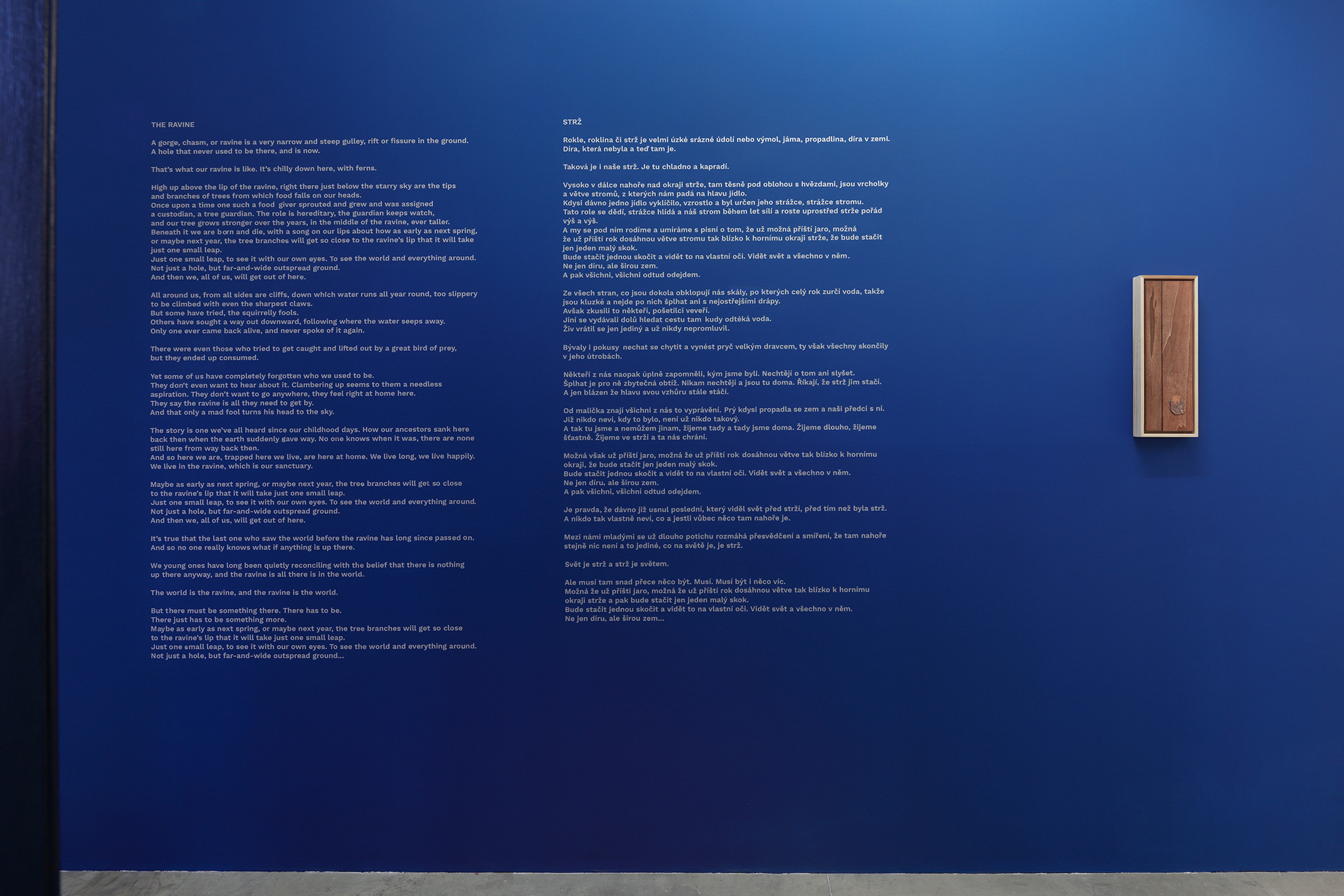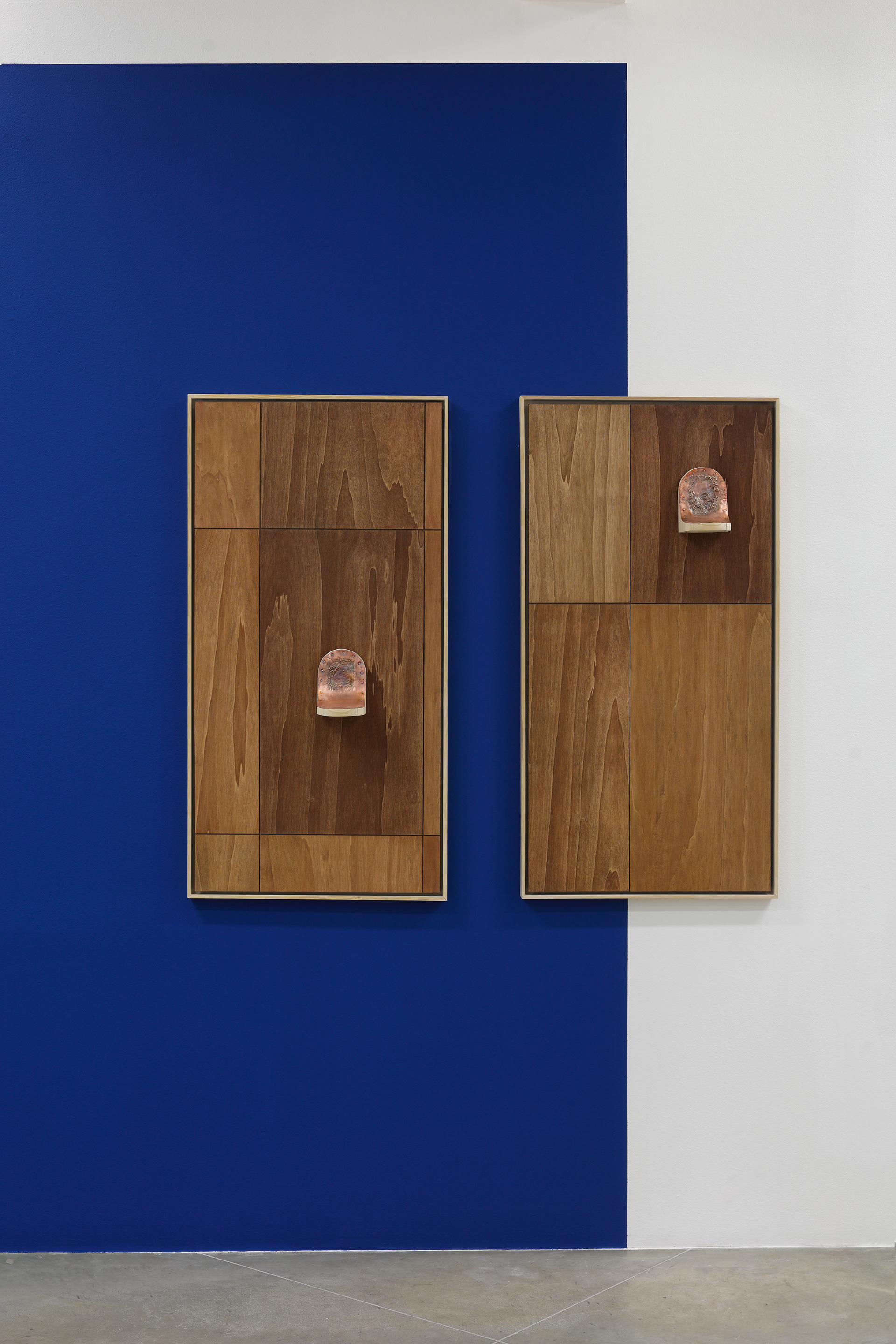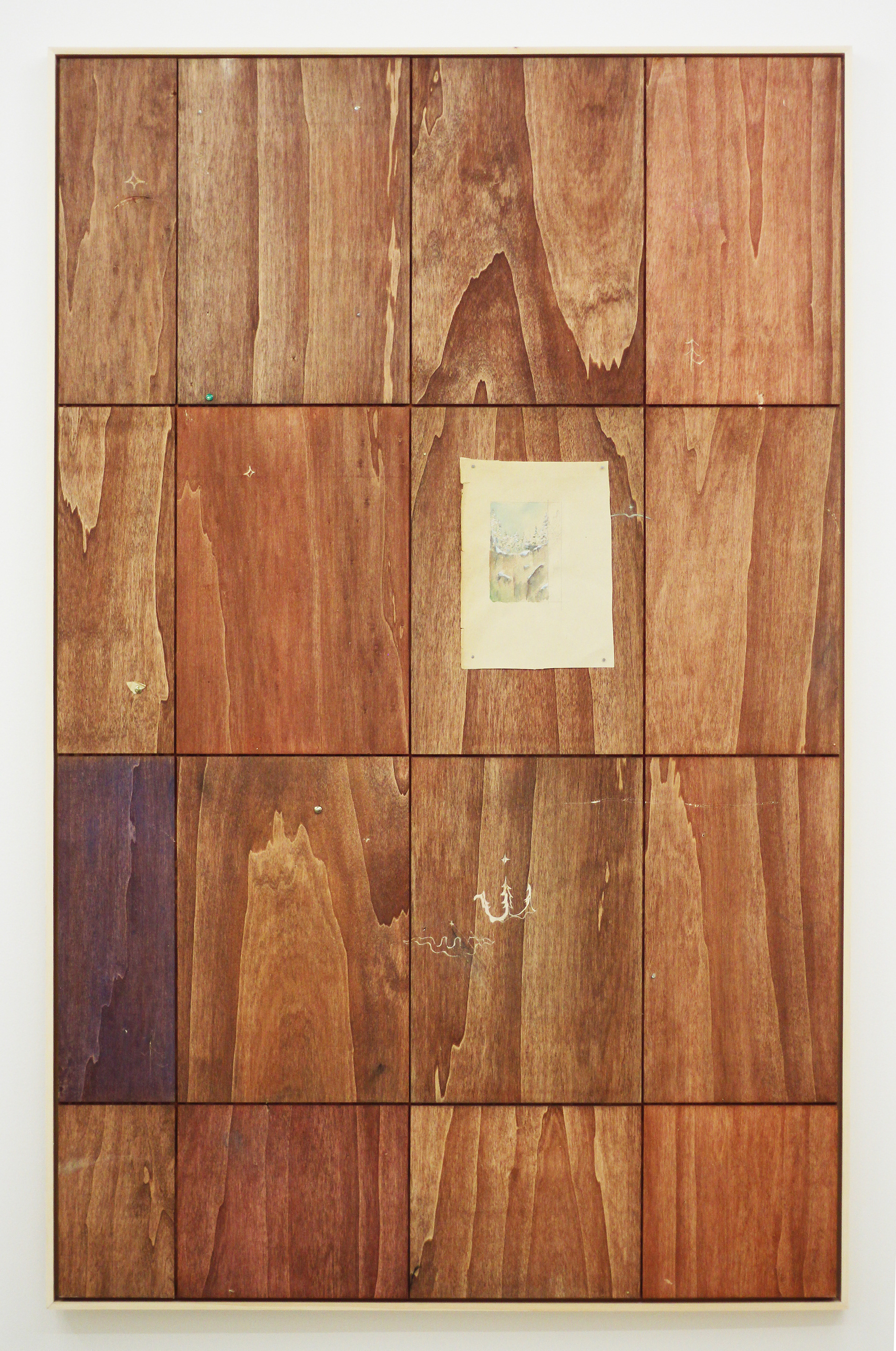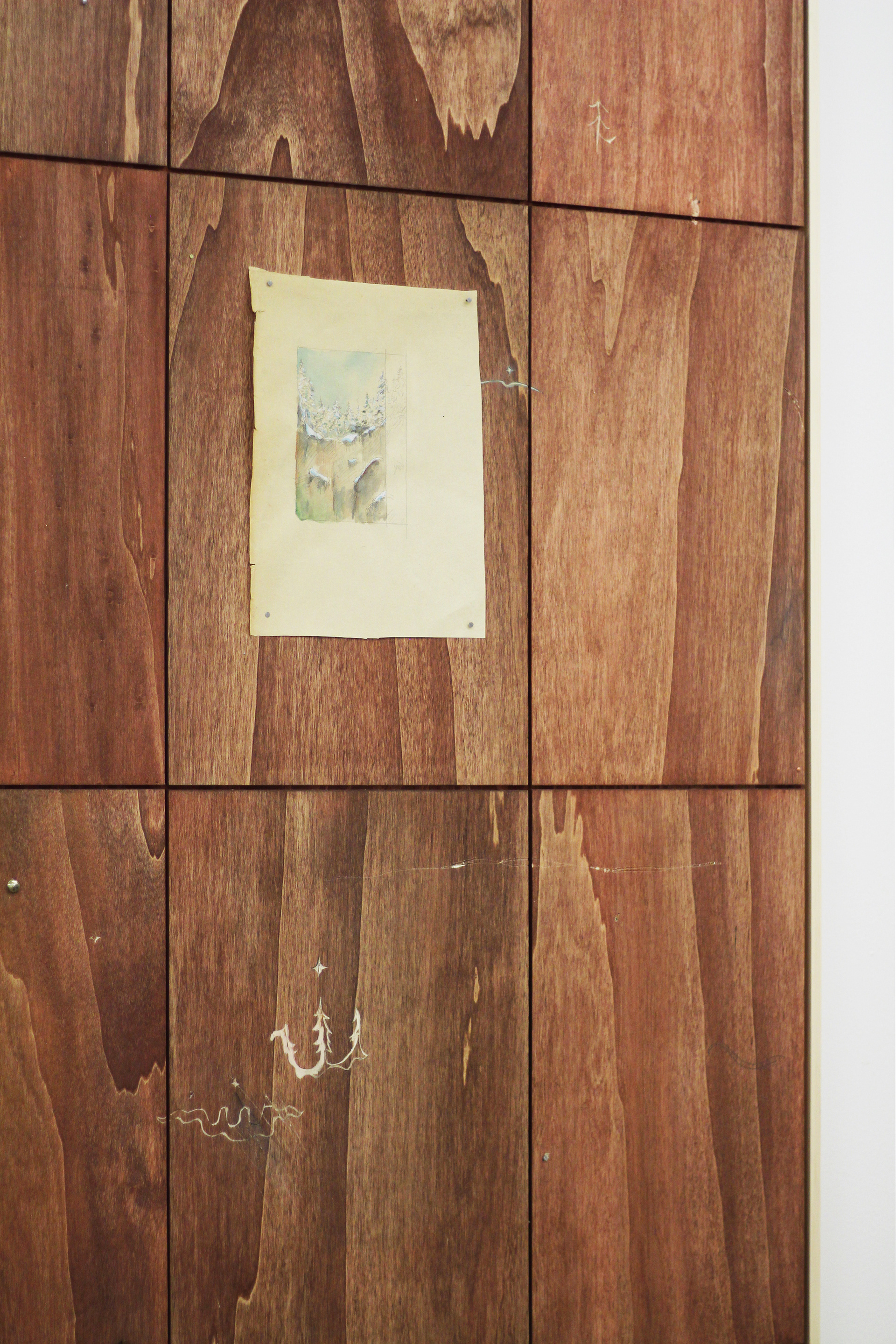
















The hole that wasn't there and now it is.
Filip Dvořák is a member of the young generation of Czech visual artists and his multimedia work naturally moves from the expanded character of painting and easel paintings through objects and installations to work with video and text. The fluid handwriting of his works stems from the wide scope of the artist's inspiration - Dvořák is fascinated by history, historical ornaments, nature and natural phenomena, speculative fictions and materials with their symbolic meanings. In his post-conceptual thinking we observe a deliberate form reduction and purity of craftsmanship in contrast to a strong emotional charge with a tendency towards a melancholic spectrum of feelings of transience, hope and expectation. He works in cycles, varying forms and motifs, searching for ideal versions and compositions.
The world is a ravine and the ravine is a world.
The solo exhibition The Ravine - The Room is a follow-up to Dvořák's Strž [Ravine] series with which he has been developing a short story of the same title since 2020. In this concise text, he describes the reality of a community living in a ravine that was created after an unexpected landslide. The hopes and aspirations of the inhabitants living in a confined space focus on the longed-for moment when the tree they look after together grows to such a height that they will be able to leave their home ravine and experience the reality of the world "up there". Like any heterogeneous community, they do not agree on everything. Attempts at dialogue are impossible in places, and views of the world obviously differ.
Dvořák's fiction abounds in symbolism, faith and hope, patience and expectation. The Ravine fable is a simple and easy-to-understand fantasy whose strength, impact and imagery lie in the reduction of the content, repetitions and historicizing lyricism. It is fully comprehensible in the textual version, yet it is the imaginative and fictional artefacts that create a deceptive sense of the existence of a parallel reality.
But there must be something there, surely.
There must be more.
The exhibition presentations of the imaginary world (Strž, 2020, Luxfer Gallery, Česká Skalice; Ravine Culture, 2021, Berlínskej model, Prague; Ve strži a jiné příběhy, 2022, GAVU, Cheb) are typified by an eclectic form through which Dvořák communicates the idea that the works have been produced by different artists. Past exhibition units consisted of traditionally rendered landscape paintings with romanticized views of a ravine, or objects and paintings depicting a tree as a symbol of growing hope. The handwriting of the works varied but they shared an interest in the reality of a different world.
In the current exhibition environment, Dvořák changes focus from macro to micro and centres, among other things, on fragments from one room of an unknown protagonist. Most of them are hanging objects - manipulated wooden tiles with hammered copper details. The individual parts of the Ravine are introduced by fictitious ready-mades and museum reconstructions of once presumably functional objects. The original form eclecticism becomes homogenized, referring at first glance to familiar historicizing forms and signs. We witness the gradual abandoning of ornament in favour of rigid geometry and quadratic patterns, elements of modernist architecture and design - somewhere between Josef Hoffmann, Charles Rennie Mackintosh and art nouveau. In combination with futuristic and at times dystopian speculation, the aesthetics of old museums or pseudo-educational elements, Dvořák explains the details and further develops the existence of the ravine community.
But maybe next spring, maybe next year
the branches will reach so close to the upper edge
that it will only take one small leap.
the branches will reach so close to the upper edge
that it will only take one small leap.
Díra, která nebyla a teď tam je.
Filip Dvořák patrí k mladej generácii českých vizuálnych umelcov a jeho multimediálna tvorba prirodzene prechádza od expandovanej povahy maľby a závesných obrazov cez objekty, inštalácie až k práci s videom či autorským textom. Fluidný rukopis diel vychádza zo širokého záberu autorovej inšpirácie – Dvořáka fascinujú dejiny, historické ornamenty, príroda a prírodné úkazy, špekulatívne fikcie či materiály s ich symbolickými významami. V jeho postkonceptuálnom uvažovaní sledujeme cielenú formálnu redukciu a čistotu remeselného spracovania v kontraste so silným emocionálnym nábojom so sklonom k melancholickému spektru pocitov pominuteľnosti, nádeje či očakávania. Pracuje v cykloch, varíruje formy a motívy, hľadá ideálne verzie a kompozície.
Svět je strž a strž je světem.
Samostatná výstava The Ravine – The Room je pokračovaním Dvořákovej série Strž, ktorou od roku 2020 rozvíja rovnomennú autorskú poviedku. V krátkom texte opisuje realitu spoločenstva žijúceho v rokline, ktorá vznikla po nečakanom zosuve pôdy. Nádeje a túžby obyvateľov žijúcich v limitovanom priestore sa upierajú na vytúžený moment, keď strom, o ktorý sa spoločne starajú, dorastie do takej výšky, že domovskú roklinu budú schopní opustiť a zažiť realitu sveta „tam hore“. Ako každé heterogénne spoločenstvo sa ani toto nezhodne na všetkom. Snaha o dialóg je miestami nemožná a názory na svet sa prirodzene líšia.
Dvořákova fikcia je plná symboliky, viery a nádeje, trpezlivosti a očakávania. Bájka o Strži je jednoduchou a ľahko pochopiteľnou autorovou fantáziou, ktorej sila, údernosť a obrazotvornosť tkvie v obsahovej redukcii, repetíciách a historizujúcej lyrickosti. Vo svojej textovej verzii je plnohodnotne zrozumiteľná, sú to však práve imaginatívne a fiktívne artefakty, ktoré vytvárajú klamlivý pocit existencie paralelnej reality.
Ale musí tam snad přece něco být. Musí.
Musí být i něco víc.
Musí být i něco víc.
Doteraz realizované výstavné prezentácie imaginárneho sveta (Strž, 2020, Luxfer Gallery, Česká Skalice, Ravine Culture, 2021, Berlínskej model, Praha, Ve strži a jiné příběhy, 2022, GAVU, Cheb) spájala eklektická forma, ktorej prostredníctvom Dvořák komunikoval predstavu, že diela vznikli od rôznych autorov. Minulé výstavné celky pozostávali z tradične ladených krajinomalieb s romantizujúcimi pohľadmi na roklinu alebo objekty a maľby zobrazujúce strom ako symbol rastúcej nádeje. Rukopis diel bol rôznorodý, no spájal ich spoločný záujem o realitu onoho sveta.
V aktuálnom výstavnom environmente Dvořák mení fokus z makra na mikro a zameriava sa okrem iného aj na fragmenty z jednej izby neznámeho hrdinu. Gros tvoria závesné objekty – manipulované drevené obklady s kovanými medenými detailmi. Fiktívne readymady spoločne s obrazotvornými muzeálnymi rekonštrukciami kedysi pravdepodobne funkčných predmetov približujú jednotlivé časti Strže. Pôvodný formálny eklektizmus sa homogenizuje, pričom už na prvý pohľad odkazuje na povedomé historizujúce formy a znaky. Sledujeme postupné opúšťanie ornamentu smerom k rigidnej geometrii a kvadratickým vzorom, prvky modernistickej architektúry a dizajnu – niekde medzi Josefom Hoffmannom, Charlesom Renniem Mackintoshom, Art Nouveau a secesiou. V kombinácii s futuristicky a miestami dystopicky ladenou špekuláciou, estetikou starých múzeí či pseudoedukatívnymi prvkami Dvořák bližšie objasňuje podrobnosti a ďalej rozvíja existenciu spoločenstva v rokline.
Možná však už příští jaro, možná že už příští rok,
dosáhnou větve tak blízko k hornímu okraji,
že bude stačit jen jeden malý skok.
dosáhnou větve tak blízko k hornímu okraji,
že bude stačit jen jeden malý skok.









